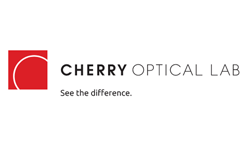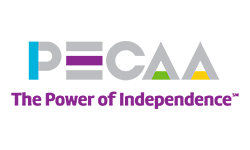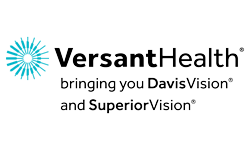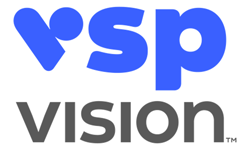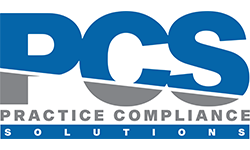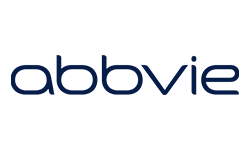Presentation to the FDA Advisory Panel on Contact Lens Solutions
Louise A. Sclafani, OD, FAAO and William J. Benjamin, OD, MS, PhD, FAAO
On June 10, 2008, Drs. Sclafani and Benjamin represented the American Optometric Association and our interests at the FDA Advisory Panel on Contact Lens Solutions in Gaithersburg, Maryland. Stakeholders were invited to make presentations of no longer than 10 minutes. This document contains the material delivered through a PowerPoint presentation by Dr. Sclafani to the attendees.
SUMMARY
 |
| Louise A. Sclafani, OD, FAAO |
 |
| William J. Benjamin, OD, MS, PhD, FAAO |
On behalf of the AOA, we would like to identify several areas of concern to Doctors of Optometry and the patients we serve. It has become apparent that contact lens care and care products are as important as the lenses we prescribe. The AOA would like to be supportive of testing such products under more realistic conditions, testing under known situations of non-compliance, and enhanced labeling of care products.
Testing of Solutions Under More Realistic Conditions
- Pathogenicity of Current Challenge Organisms
- More Resistant Standardized Challenge Organisms
- No Rub & Rinse to Demand Increased ‘cidal Activity
- Organic Soil
Testing Under Known Situations of Intractable Non-Compliance
- Directions are Considered Too Time-Consuming, Expensive, or Laborious
- Patients Don’t or Won’t Follow Instructions
- No Hand Washing
- Topping Off of Solutions
- No Rub & Rinse
- Dirty Case
- Evaporation
Improved Labeling
- Major Non-Compliance Issues should be More Prominently Displayed
- “Wash Hands Before Handling Products and Lenses”
- “Do Not Top Off Solutions”
- “Rub & Rinse Necessary”
- Mandatory Discard Date
When prescribed appropriately, contact lenses greatly improve the central and peripheral vision of most patients over that which would be otherwise obtained. We believe that the topics noted above need additional attention so that, by consensus of industry, government, and practitioners, the balance can be improved between the impact of contact lens complications and the positive aspects of contact lens wear on the visual welfare of the nation.
INTRODUCTION
On behalf of the AOA, we would like to identify several areas of concern to Doctors of Optometry and the patients we serve. I am Dr. Louise Sclafani, Chair of the AOA Contact Lens and Cornea Section, and I appear before you with Dr. William J. Benjamin, from the AOA Commission of Ophthalmic Standards. It has become apparent that contact lens care and care products are as important as the lenses we prescribe. Thank you for realizing this relationship and for being responsive to our needs as demonstrated by this hearing today.
We have seen as a result of the two major recalls in the past 3 years, solutions may be getting on the shelves sooner than they should. This may be due to pressure on industry to develop novel solutions, which may go to market before they have been adequately tested. With over 30 million contact lens wearers in the US, it seems that this would be an area that could cause a true public health issue and thus it warrants attention. We would like to suggest that the FDA, industry, contact lens practitioners, and patients look at strengthening the pre-market testing of care regimens in three basic areas:
- Testing of Solutions Under More Realistic Conditions
- Testing Under Known Conditions of Intractable Non-Compliance
- Improved Labeling
The AOA would be supportive of testing such products under more realistic conditions, testing under known situations of non-compliance, and enhanced labeling of care products. There are several manners of doing so in each of these three topical areas.
Testing of Solutions Under More Realistic Conditions
- Pathogenicity of Current Challenge Organisms
- More Resistant Standardized Challenge Organisms
- Testing with Rub & Rinse Regimen to Demand Increased ‘cidal Activity
- Testing with Organic Soil and/or Biofilm
- Testing with actual Lens and case Materials to Determine activity and toxicity
I will now address the potential methods of strengthening the guidance document by testing of care regimens under those realistic conditions that may contribute to undesirable conditions or adverse contact lens events as listed above.
Pathogenicity of Current Challenge Organism
More Resistant Standardized Challenge Organisms
The use of the American Type Culture Collection (which tests for ATTC= PA, SA, Serratia, Candida, Fusarium) isolates is limited and needs to be updated as the strains have become overused and new ones begin to prevail. Based on climate and resistance, the common may become less common. In fact, Serratia is becoming a more prevalent pathogen for contact lens induced microbial keratitis in countries such as Australia. We know that Acanthamoeba Keratitis may be uncommon, but given that more than 90% of AK infections are in contact lens wearers, to our patient population it is significant. We know it is difficult to kill the cyst form and that there are many variations in how these organisms are cultured. We feel that a more standardized testing process should be developed and used by the FDA, prior to approval, as well as to compare efficacy between products so that a practitioner can make better judgments when prescribing solutions.
Testing Regimen with No Rub & Rinse to Demand Increased ‘cidal Activity
A product’s viability should be tested under no-rub and no-rinse conditions to assure greater anti-microbial ability. It is known that some patients do not rub and rinse even when advised to do so. The AOA firmly believes there are additional benefits from rubbing including the removal of biofilms and deposits, especially with the increased usage of silicone lenses. Although the AOA recommends a rub and rinse step for all care regimens, testing with the lack of this step holds solutions to a higher level of efficacy.
Testing with Organic Soil and Biofilms
The ‘cidal activity could be tested utilizing in-vitro organic soil to better simulate those conditions in which microorganisms have a potential food source. As we have seen with some recalled solutions, the ingredients may have contributed to proliferation of microorganisms because they had a source of nutrition. This should be part of standardized testing. The creation of a biofilm on the lens case and bottles also contributes to contamination, increased virulence, and reduced bioavailability of the ‘cidal agent. The ability to simulate these conditions and test the efficacy of these solutions under these conditions could become standard. In addition, there are trends emerging in anti-microbial technology using silver, furanones, selenium and cationic peptides as coatings or composite materials in lenses, cases or solution bottles. As these novel products come to market, they should be re-tested with the intended solution and labeling should reflect if compatibility has been achieved. Hence, we are hopeful that the microbial issues of today will be made inconsequential by new technologies of the future.
Testing Using Actual Lens and Case Material to Determine Activity and Toxicity
It has become apparent that the materials to which the solution will be exposed—the actual lens and case—is another area of concern. Recent studies by industry and practitioner experience have shown that undesired effects from poor lens/solution combinations can occur just as medications have poor drug interactions. One area that is currently being investigated is the amount of solution that is being absorbed by the contact lens or case thereby reducing the availability of the biocide.
Toxicity due to lens uptake of solution and changes in lens parameters are two other possible effects and we are requesting testing of preservative uptakes. This information should be available to the practitioner so that they can make the appropriate choices for patients.
Testing Under Known Situations of Intractable Non-Compliance
- Directions are Considered Too Time-Consuming, Expensive, or Laborious
- Patients Don’t or Won’t Follow Instructions
- No Hand Washing
- Topping Off of Solutions
- No Rub & Rinse
- Dirty Case
- Evaporation
The final area of whether a solution is going to be effective is in the hands of the user, our patients. Practitioners are fully aware that compliance is an area that can affect safe wearing of lenses. Although the recent outbreaks that resulted in solution recalls had solution failure has a probable cause, improper use of the solution and poor compliance cannot be ignored.
Directions are Considered Too Time-Consuming, Expensive, or Laborious
Patients Don’t or Won’t Follow Instructions
Patients are overloaded with information, but in the end they want shortcuts. They feel that the directions are too time-consuming and laborious. Often, cost will guide them and a variation from the prescribed product may result in improper usage. They do want to follow the advice of their doctor who is in authority who should guide them through the disinfecting and handling process since this should be part of the overall contact lens prescription. One of our goals at the AOA is to stress to our members the importance of giving direction and taking control to emphasize its significance in the overall picture. The Fogel study showed that more and more Americans are receiving their medical advice from the internet, and the UK reports that the general public views George Clooney from the hit show ER as the most influential person in medicine. An astute observer may pose the question, when approving a solution, should the guideline be that known habits should fit the product or should products be designed to fit the habits?
Poor Hand Washing
Dirty Cases
As eye care professionals, we believe we should take control of these issues. However this challenge may be a slow and incomplete process and therefore we are asking the FDA to test the products under those situations of intractable non-compliance such as poor hand washing and dirty cases. Some recent work by Phillip Morgan at the University of Manchester may shed some light on the potential for improvement. He surveyed common habits of lens wearers, relative risk associated with non-compliance as evidenced by peer reviewed research, and the potential to modify behavior in these subjects. These two factors ranked very high in importance. Studies by Stapleton and Chang have shown that patients do not properly wash their hands prior to insertion and are even less likely upon removal. In 2001, Houang showed a 4x increase in relative risk for infection for those who did not properly clean cases. We are suggesting testing of products under these circumstances. Although the AOA recommends providing cleaning instructions and recommended discard dates for the cases, this habit could be modified if cases were more readily available as a result of a requirement to have them accompany every full size bottle.
Topping Off of Solutions
Evaporation
Knowing that patients will often find the easy way out by not closing the bottles or cases properly and by topping off their solutions rather than refilling with new, we pose that solutions be tested under these circumstances. Cheng showed that in the Fusarium outbreak, these conditions increased the risk for infection by threefold.
Improved Labeling
- Mandatory Discard Date
- Major Non-Compliance Issues Should Be More Prominently Displayed
The FDA is responsible for solutions to be safe and perform well, but also to ensure that similar labels meet minimal standards of clinical performance. The present guidance document for contact lens products dates from 1997, and for that for Daily Wear contact lenses from 1995. I will now address some potential methods of strengthening the guidance document by improved labeling of care regimens.
Mandatory Discard Date
Although there is an expiration date on bottles of solution, the US does not require a mandatory discard date after opening. The only requirement is that it has a preservative or is packaged to reduce contamination. This has been a vague and confusing area for both patients and practitioners. With evaporation, contamination, and possibly reduced efficacy occurring over time and possibly resulting in adverse events, we would support the idea of discard dates that are prominently labeled on the bottle.
Major Non-Compliance Issues
- “Wash Hands Before Handling Products and Lenses”
- “Do Not Top Off Solutions”
- “Rub & Rinse Necessary”
The most efficient and consistent method for improving compliance is by standardization of labels. Clearly marked on the front label in large font should read, at the minimal or in some similar verbiage the following: “Wash hands before handling products and lenses,” “Do not top off solutions,” and “Rub & rinse is necessary as recommended by your eye care professional.” With so much emphasis on compliance by both the professional organizations and industry, there seems to be a need to implement these guidelines. This simple modification with universal messaging has the largest capture rate with hopes of reducing complications.
FINAL THOUGHTS
The past few years have reminded both the public and eye care professionals that contact lenses and the solutions we use are medical devices with benefits and consequences. Safe and effective products are needed to prevent mild complications and those that are devastating.
The public trusts that those solutions and lenses be thoroughly tested before becoming available for use and that the laws that protect them from getting harmed be fully enforced such as Fairness to Contact Lens Consumer Act. Post market surveillance and ease in reporting of complications should be mandatory to reduce the potential for outbreaks and improve communication between interested parties.
When prescribed appropriately, contact lenses greatly improve the central and peripheral vision of most patients and in those whose only means of vision is with contact lenses. We believe that the topics noted above need additional attention so that, by consensus of industry, government, practitioners, and patients, the balance can be improved between the impact of contact lens complications and the positive aspects of contact lens wear on the visual welfare of the nation.



